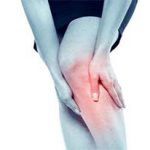Mirror therapy for Chronic Leg Pain
 Chronic pain is an extremely debilitating condition. Chronic leg pain could occur from a variety of primary sources. Some of these could be an acute accident (such as a road traffic accident), referred lower back pain, burns or amputation. If you suffer from chronic pain you are likely to have reduced quality of life (Ballantyne & Sullivan 2015). If untreated, pain can lead to depression, sleeping disorders, immune suppression, eating disorders, cognitive impairment, and other long-term negative effects (Mansour et al 2014). Chronic leg pain is likely to cause problems with walking which may limit your ability to carry out day to day tasks or go to work. Relying on a walking aid such as a stick can also be detrimental to your appearance of yourself and can cause low mood and anxiety. Therefore, it is vital to find an effective leg pain treatment method.
Chronic pain is an extremely debilitating condition. Chronic leg pain could occur from a variety of primary sources. Some of these could be an acute accident (such as a road traffic accident), referred lower back pain, burns or amputation. If you suffer from chronic pain you are likely to have reduced quality of life (Ballantyne & Sullivan 2015). If untreated, pain can lead to depression, sleeping disorders, immune suppression, eating disorders, cognitive impairment, and other long-term negative effects (Mansour et al 2014). Chronic leg pain is likely to cause problems with walking which may limit your ability to carry out day to day tasks or go to work. Relying on a walking aid such as a stick can also be detrimental to your appearance of yourself and can cause low mood and anxiety. Therefore, it is vital to find an effective leg pain treatment method.
Mirror therapy is a treatment method for leg pain relief. One of the main benefits of mirror therapy is that it provides you with the opportunity to manage your own pain (Yildirim & Kanan 2016). This improved feeling of control should improve your mood and self-esteem and reduce anxiety (Darnall 2009). This is vital in chronic pain states as increased anxiety is normally associated with increased pain. It is thought that, any treatment which can address emotional and psychological factors will help reduce the intensity and shorten the duration of pain (Nakamura et al 2014).
Mirror therapy are used commonly for pain from the upper or lower limbs. The mechanism of how it works is not yet known. The affected leg is hidden behind a mirror and the reflection of activity of the “good” leg is visualised as the affected leg. Activity is generally started very small and simple and in severe pain states only the non-affected leg should be moved (NOI). Seeing this leg move and perceiving it as your affected leg allows your brain to experience movement without pain. Studies have found that reorganisation of the brain occurs in chronic pain states. It is proposed that this reorganisation is partially reversed using mirror therapy and this corresponds with a reduction in pain (Flor et al 2006). This would support the idea that using mirror therapy helps “rewire” the brain back to its normal state, hence decrease pain long term (Moseley et al 2008). Mansour et al (2014) redefined chronic pain as “pain that does not extinguish its memory trace”. By this they meant that feeling chronic pain is more like a memory of previous pain. If you continue to move that leg and experience pain you will continue to “learn” that the movement is painful. If you break this cycle by witnessing your leg moving without pain in a mirror, you can start to “unlearn” the pain and forget that pain memory.